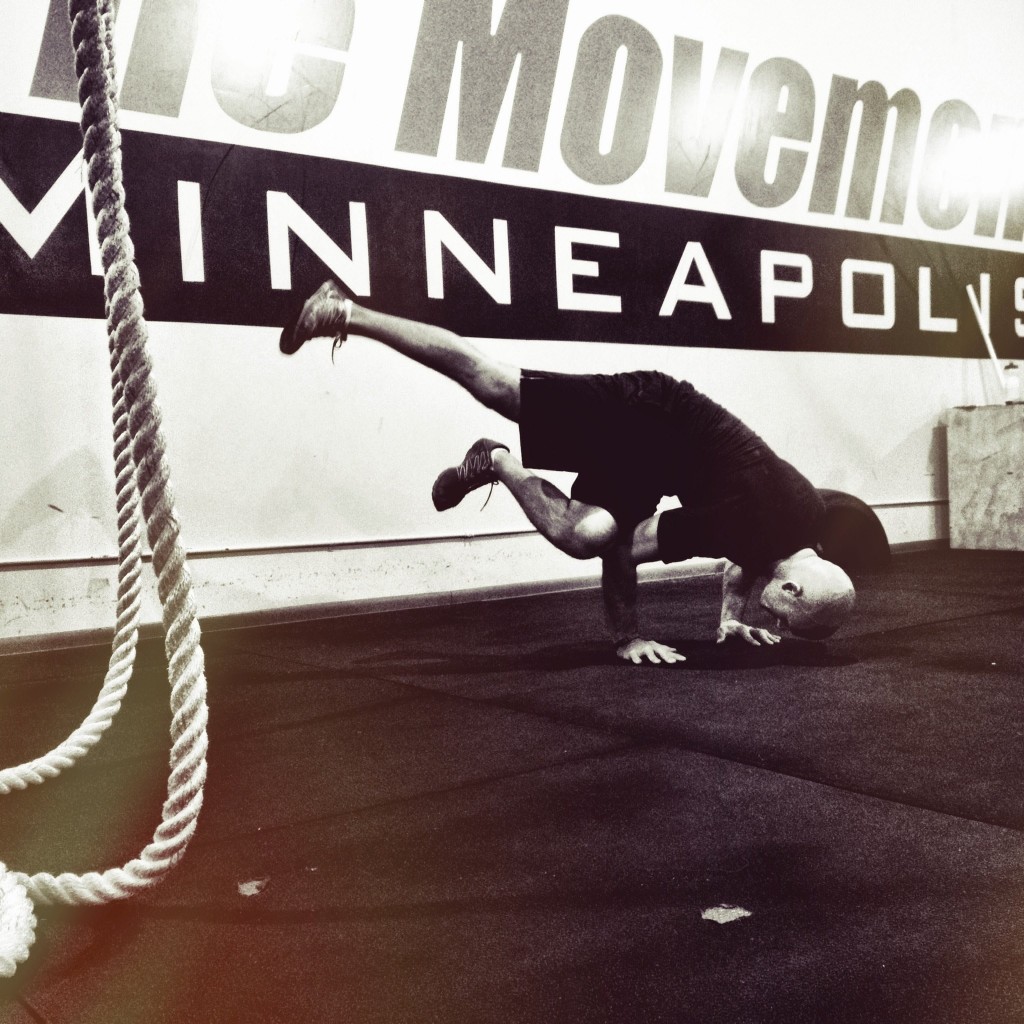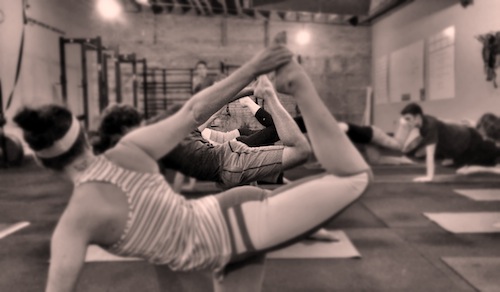

I am an unabashed “strength guy.” That is to say, while it is nice that as a byproduct of my training I look pretty good naked, it’s just not my goal. In aligning myself as a strength guy I am not a kettlebell guy, or a barbell guy, or a bodyweight guy. Sometimes I do kettlebell clean and jerks and sometimes I deadlift barbells. All of those things are tools or means to the end of achieving greater strength.
Tools aside, when it comes to types of movement, I generally stick to pure strength things. I don’t particularly enjoy bodyweight calisthenics, I don’t run unless it’s a (hill) sprint, and I don’t do sets of high reps just to get a pump.
So you can imagine what I might say about yoga. In the words of my buddy Mike Sheehan (say this with a thick Boston accent): “How is that gonna make me strongeh?” I’ve generally relegated yoga to women and guys who wear pants that should fit women.
The thing is, I was wrong.
I was wrong, and I intend to tell you why I was wrong.
One of the very core tenets of the Gym Movement protocol that I learned from Frankie Faires is this very simple idea:
Move what’s not moving.
When you internalize that simple idea, doors unlock and gates swing open to a world of possibility. Moving what’s not moving has allowed me to get stronger, more athletic, and get out of and stay out of pain. It’s also helped countless of my clients do the same. Let me give you a few very basic examples to get you thinking:
- If your knees hurt when you squat but you’re not sitting back into your hips at all then your knees are not the problem – your hips are not moving. Move the hips, and the knees aren’t a problem anymore.
- Bret Contreras has made himself famous with one simple idea: Your glutes aren’t moving. Get them moving and all kinds of other functions improve.
Just to show you how powerful this idea is, you can take it out of the training world and apply it to a completely different area of life:
- Spending too much time working lately and no time socializing? How much would your entire worldview improve if you moved what’s not moving: your social life?
- Have you ever had a sudden, persistent, intense craving for a particular food or type of food? Your intution is a powerful force, and it’s probably telling you that you need something you haven’t had in some time.
I could go on for pages giving examples, but that’s not the point of this post, so I’ll get to the point.
Yoga has given me an unexpected opportunity to see or feel what’s not moving, and then move it. Doing that has allowed me to move better during my strength training, making me measurably stronger.
To illustrate what I mean, allow me to describe how I approach a yoga class. Incidentally, I take the classes my wonderful instructors at The Movement Minneapolis teach. Together, we’re developing an innovative approach that allows people to engineer their own process.
- As the instructor describes and demonstrates the pose, I’ll move into it the best I can.
- Once I’m “in” the pose, I’ll start moving around in the associated joints seeing if there is something that is stuck or not moving very much.
- When I find an area that lacks movement, I’ll move the joints AROUND that joint to create more movement. For example, in the yoga twisting lunge pose (don’t ask for the sanskrit name, I’m not a hippie) I might find that I can’t get much upper body rotation. In that case, I’ll move my hips around looking to see where I can find more movement in my spine.
- Once I’ve moved as much as I can in that position, I’ll move on to the next position.
This process is one that you can only undergo by either doing your very own yoga practice, or by going to a class but being willing to move at your own pace and ignore the machinations of the class around you. Move past a position if it’s not doing anything for you, and spend some more time on it if you need to.
Is this instantly going to take you from being a bodyweight overhead presser to a double-bodyweight overhead presser? Nope. Could it help you move what’s not moving, and unlock untapped potential? Absolutely.



Dave –
How have you applied the testing protocol to yoga? I have a low back pain history, which has been exacerbated by yoga programs in the past. I have had less pain with DLs, etc. by testing, but I haven’t ever figured out how to work it smoothly into a yoga-type setting (or really any setting that is follow-along and/or comprised of a lot of different movements). Constantly interrupting poses for a toe touch is disruptive in a class setting, and even when following a video or personal routine it ruins the “flow” aspect. What are your thoughts? Thanks –
Jason
Jason,
In Yoga I think it works very well to use the movement as the test. So let’s say for example you do a triangle, you can feel and see how much rotation or movement you are getting in the hips and spine. Then make a change to your position, and see if it’s better or worse. This is essentially the same as testing. Any time you can do a forward-fold, you have a built-in test to see if the movement preceding it tested better or worse.
Hope that helps. I hope that eventually our Movement Yoga instructors are able to put out more content explaining how they’ve integrated these concepts.